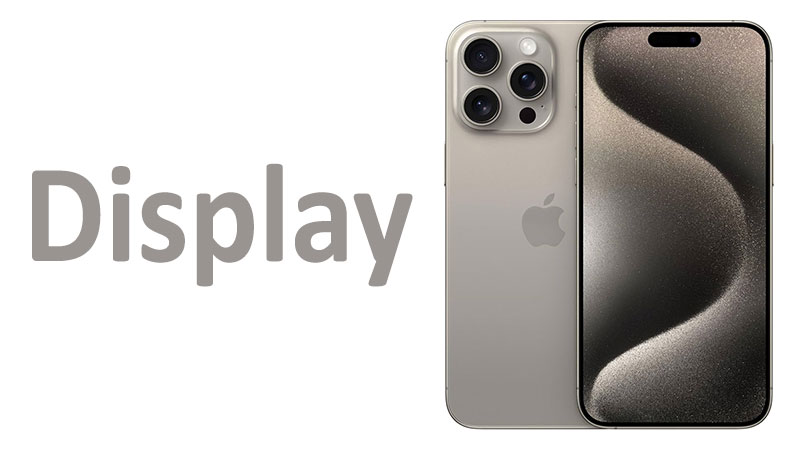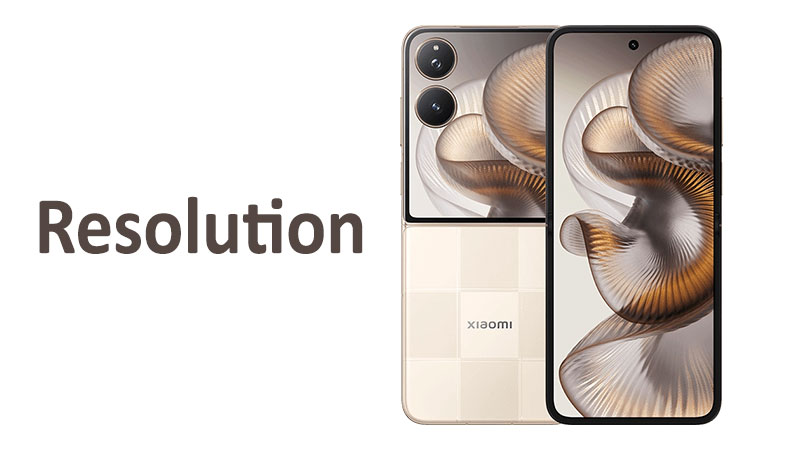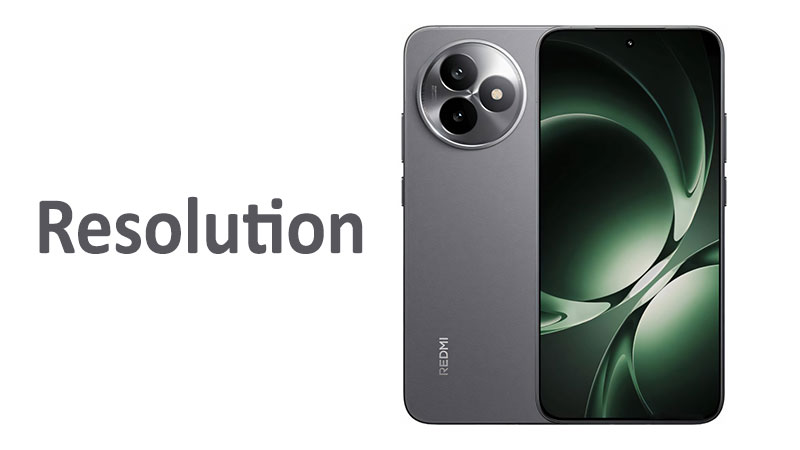The Apple iPhone 15 Pro Max display represents the pinnacle of mobile screen technology. It is the centerpiece of the user experience. This large, powerful screen dictates everything from content consumption to professional color grading. Understanding its technical specifications, including the resolution, brightness, and underlying panel type, is essential for any buyer. The display’s quality directly impacts media viewing, gaming, and daily interactions. This comprehensive article delivers a detailed review of the iPhone 15 Pro Max display. We will examine the specs, compare its performance to rivals, and provide crucial insights for potential owners.
Technical Specifications: The Core of the Display
The iPhone 15 Pro Max boasts a top-tier panel. This panel integrates several advanced technologies. These features work together to create a visual experience that is both smooth and highly accurate. The display’s performance metrics place it among the best screens available on any smartphone.
Panel Type: LTPO Super Retina XDR OLED
The foundation of the display is the LTPO Super Retina XDR OLED panel. OLED technology means each pixel produces its own light. This results in perfect blacks and essentially infinite contrast ratios. This is a major advantage over traditional LCD screens.
The “Super Retina XDR” designation is Apple’s branding. It signifies extremely high brightness and superior dynamic range. The crucial component here is LTPO. LTPO stands for Low-Temperature Polycrystalline Oxide. This technology allows the display to dynamically change its refresh rate. This feature is vital for both smooth motion and excellent battery life.
Dynamic Refresh Rate: ProMotion (120Hz)
The iPhone 15 Pro Max features ProMotion technology. This enables a variable refresh rate of up to 120Hz. A higher refresh rate means the screen updates more frequently. This makes scrolling, animations, and gaming look incredibly fluid.
Thanks to LTPO, the refresh rate can drop dramatically. It can go down to as low as 1Hz for static content. For example, the refresh rate slows to 1Hz when viewing the always-on display. This dramatically conserves battery power. When you interact with the screen, the rate instantly ramps up to 120Hz. This intelligent scaling is what defines the ProMotion experience.
Screen Size and Immersion
The physical dimensions of the screen contribute significantly to its premium feel. The iPhone 15 Pro Max features a 6.7-inch display. This large size provides an expansive canvas for all tasks. The display area measures approximately 110.2 cm².
The design minimizes the surrounding bezels. This results in an impressive ~89.8% screen-to-body ratio. This ratio indicates a highly immersive viewing experience. The display dominates the front of the phone. This design is crucial for maximizing the visual impact of movies and games. The near-bezel-less design makes content jump out at the user.
Resolution, Pixel Density, and Clarity
Resolution is the number of pixels on the screen. Pixel density measures how tightly those pixels are packed. Both factors are essential for determining the image sharpness and clarity of the display.
Native Resolution and Aspect Ratio
The display carries an unusual native resolution of 1290 x 2796 pixels. This resolution is optimized for the display’s shape. The screen maintains an 19.5:9 aspect ratio. This ratio is slightly taller and narrower than traditional 16:9 displays. This format is ideal for modern mobile content and comfortable one-handed scrolling.
The unique pixel count ensures that high-resolution content is rendered with exceptional detail. Apple carefully calibrates this resolution. They ensure it works perfectly with the iOS interface and system fonts. Text is crisp, and images show fine detail.
Pixel Density (PPI) and Sharpness
The iPhone 15 Pro Max achieves a pixel density of approximately 460 ppi. PPI stands for pixels per inch. This density is well above the threshold that the human eye can typically distinguish at normal viewing distances. The result is what Apple calls a “Retina” display.
This high ppi ensures that individual pixels are virtually invisible to the naked eye. Images appear lifelike. Graphics and fonts are rendered with photographic quality. This level of sharpness is paramount for reading small text, browsing high-resolution images, and viewing detailed maps. The high density contributes significantly to the overall perceived display quality.
Specialized Comparison: Resolution vs. Competitors
High-end Android flagships often boast higher advertised resolutions. Some competitors reach Quad HD+ or even 4K resolutions. This translates to pixel densities exceeding 500 ppi. However, these devices often run at a lower, battery-saving resolution by default.
Apple prioritizes efficiency and practical clarity. The iPhone 15 Pro Max’s 460 ppi is a sweet spot. It offers more than enough sharpness for any user while minimizing the processing load. This balance ensures maximum battery life and consistent, sustained performance. For practical purposes, the sharpness of the iPhone 15 Pro Max display is virtually indistinguishable from higher-resolution rivals.
Brightness, Contrast, and Color
Display quality is heavily dependent on how the screen handles light and color. The iPhone 15 Pro Max excels in both contrast and brightness capabilities. These features are critical for outdoor use and HDR video playback.
Peak Brightness Levels
The iPhone 15 Pro Max offers two distinct brightness metrics. The typical brightness is 1000 nits. This is the brightness level for standard usage conditions. It works well indoors and in moderate outdoor light.
Crucially, the High Brightness Mode (HBM) achieves up to 2000 nits peak brightness. This is specifically for outdoor use. The phone uses this level to combat direct sunlight. This incredible brightness ensures the screen remains perfectly legible, even under harsh illumination. This 2000-nit peak also applies to small areas of the screen when displaying HDR content.
High Dynamic Range (HDR) Support
The display fully supports two leading HDR standards: HDR10 and Dolby Vision. HDR fundamentally expands the range between the darkest blacks and the brightest whites. This leads to a more realistic and impactful viewing experience.
Dolby Vision is a proprietary, advanced HDR format. It uses dynamic metadata to adjust brightness and color frame-by-frame. The iPhone 15 Pro Max renders this content with stunning fidelity. This is a massive benefit for movie enthusiasts and binge-watchers. The display’s ability to hit high brightness peaks and perfect blacks makes the HDR effect truly stand out.
Color Accuracy and Consistency
Apple sets a high standard for color accuracy across all its devices. The iPhone 15 Pro Max display is factory-calibrated to adhere to the P3 wide color gamut. This ensures colors are reproduced with exceptional fidelity. This is vital for photographers and video editors. They need their mobile screen to accurately reflect the true colors of their content.
The color accuracy is consistent across different brightness levels and viewing angles. There are no noticeable shifts in tint or saturation when tilting the screen. This professional-grade color reproduction is a key selling point for content creators.
Durability and Advanced Features
Beyond resolution and color, the display includes features that protect it and enhance user interaction. These aspects contribute to the phone’s overall premium experience and longevity.
Ceramic Shield Protection
The display is protected by Apple’s proprietary Ceramic Shield glass. This material incorporates ceramic nanocrystals within the glass matrix. This process makes the screen significantly tougher than traditional smartphone glass.
Apple claims the Ceramic Shield offers four times better drop performance than the glass on previous iPhones. This durability is essential for such a large, premium device. While the screen is highly resistant to drops, it is still advisable to use a protective case. The Ceramic Shield provides excellent scratch resistance against daily wear and tear.
The Always-On Display and Dynamic Island
The ProMotion display enables the Always-On Display (AOD) feature. Since the screen can drop to 1Hz, it can continuously show the time, widgets, and notifications without draining much battery. The AOD is seamlessly integrated with the customizable lock screen.
The Dynamic Island is another key feature that utilizes the screen’s interactive potential. This pill-shaped cutout dynamically expands and transforms to display live activities. It shows alerts, notifications, and ongoing background tasks. The Dynamic Island effectively integrates the front-facing camera hardware into the software experience. It is a smart use of screen space.
Specialized Comparison: Always-On Display
Many Android phones have had AOD for years. However, the iPhone 15 Pro Max’s AOD is uniquely implemented. Instead of showing a simple black background, the iPhone’s AOD is a dimmed version of the actual lock screen. This provides more context and personalization. Furthermore, the LTPO technology ensures that this complex AOD draws minimal power. This makes it more efficient than many competing implementations.
Pros, Cons, and Buyer’s Takeaways
The iPhone 15 Pro Max display is a triumph of engineering. Yet, like any technology, it has areas where it excels and minor areas where it could be improved.
Pros of the iPhone 15 Pro Max Display
The screen offers several clear advantages that enhance the user experience.
- Exceptional Fluidity: The ProMotion 120Hz variable refresh rate delivers incredibly smooth scrolling and responsiveness.
- Industry-Leading Brightness: The 2000-nit HBM ensures perfect outdoor visibility, even in direct sunlight.
- Perfect Contrast: OLED technology guarantees pure blacks and infinite contrast, ideal for cinematic content.
- Superior Color Accuracy: Factory calibration and P3 wide color support make it an excellent tool for creative professionals.
- Robust Protection: The Ceramic Shield glass offers high durability and damage resistance.
Cons of the iPhone 15 Pro Max Display
The display’s drawbacks are minor but worth noting for potential buyers.
- Resolution Gap: Some high-end rivals offer higher resolution (QHD+) for those seeking the absolute highest ppi, although the difference is negligible in practice.
- Cost Contribution: The advanced LTPO and display technology significantly contribute to the phone’s high overall price.
- PWM Dimming: Like all OLED screens, the display uses Pulse Width Modulation (PWM) for brightness control. Some sensitive users may notice slight flickering at very low brightness levels.
Key Takeaways for Buyers
Buyers should consider these points when evaluating the display’s importance to their purchase decision.
- Prioritize Fluidity and Brightness: If you prioritize smooth interaction and excellent outdoor visibility, the ProMotion and 2000-nit peak brightness are essential selling points.
- Value Color Accuracy: If you are a content creator, the Pro Max display offers the color fidelity necessary for professional work on the go.
- Expect Long-Term Quality: The combination of OLED, ProMotion, and Ceramic Shield ensures the display will remain a top-tier visual experience for years.
- Screen is the Star: For consumers who spend hours watching videos, playing games, or multitasking, the large 6.7-inch screen is the primary feature justifying the Pro Max price tag.
Conclusion
The Apple iPhone 15 Pro Max display solidifies its position as one of the best smartphone screens in the world. It achieves a near-perfect balance of technical excellence and user-focused features. The combination of the LTPO Super Retina XDR OLED panel and 120Hz ProMotion ensures unrivaled fluidity and power efficiency. Its 1290 x 2796 resolution provides crisp clarity at 460 ppi. The 2000-nit peak brightness and full support for Dolby Vision make it an exceptional device for HDR content viewing, even under harsh sunlight.
While some competitors may advertise slightly higher specifications, the iPhone 15 Pro Max excels in real-world performance. Its color accuracy and seamless integration with the Dynamic Island and Always-On Display create a truly cohesive and premium experience. For anyone seeking the absolute best visual experience on a mobile device, the iPhone 15 Pro Max display is a compelling reason to choose this flagship phone.
FAQ
What type of display does the iPhone 15 Pro Max use?
It uses an LTPO Super Retina XDR OLED display with ProMotion technology.
What is the maximum brightness of the iPhone 15 Pro Max screen?
The display can reach a peak brightness of 2000 nits in High Brightness Mode (HBM) for outdoor viewing.
Does the iPhone 15 Pro Max have a 120Hz refresh rate?
Yes, it features a 120Hz variable refresh rate, known as ProMotion, which adapts dynamically down to 1Hz.
What is the screen resolution and pixel density?
The resolution is 1290 x 2796 pixels, which results in a sharp pixel density of approximately 460 ppi.
What protects the iPhone 15 Pro Max display?
The screen is protected by Apple’s custom-engineered Ceramic Shield glass.



